For those of us of a certain age, no matter what the photo technology in our hands, we’re thinking of the output in terms of photographic prints, not pixels on a display. In my case, that’s because as bad a darkroom tech as I was in high school in the late 1960s and early 1970s, I was smart enough to know that I needed to think in terms of how my photo would look as a print before I snapped the shutter on my Nikkormat.
In this digital age, I’ve been most fortunate to have an outstanding printer who is an absolute genius producing beautiful inkjet prints from either digital original files or scans of the film I still shoot (mostly for personal projects). He knows my likes and dislikes, and has printed my work for more than 20 photo exhibits, including an ongoing solo exhibit in Japan that’s anchored by a photo printed 8-feet wide by 5-feet tall.
While the inkjet prints are top quality – and they’ve been purchased by patrons and institutions – there’s that small voice in one’s head that whispers, “make wet darkroom prints.” But the options to make that happen are few and far between.
Then I came across a YouTube video by Ted Forbes (The Art of Photography) with the click-bait title, “Inside the Greatest Photography Lab in Existence”. The lab, Hidden Light LLC, is in the high mountain community of Flagstaff, Arizona. When it comes to photographic prints, Hidden Light is a wet darkroom operation producing silver gelatin and platinum palladium print, as well as inkjet prints using Piezography inks.
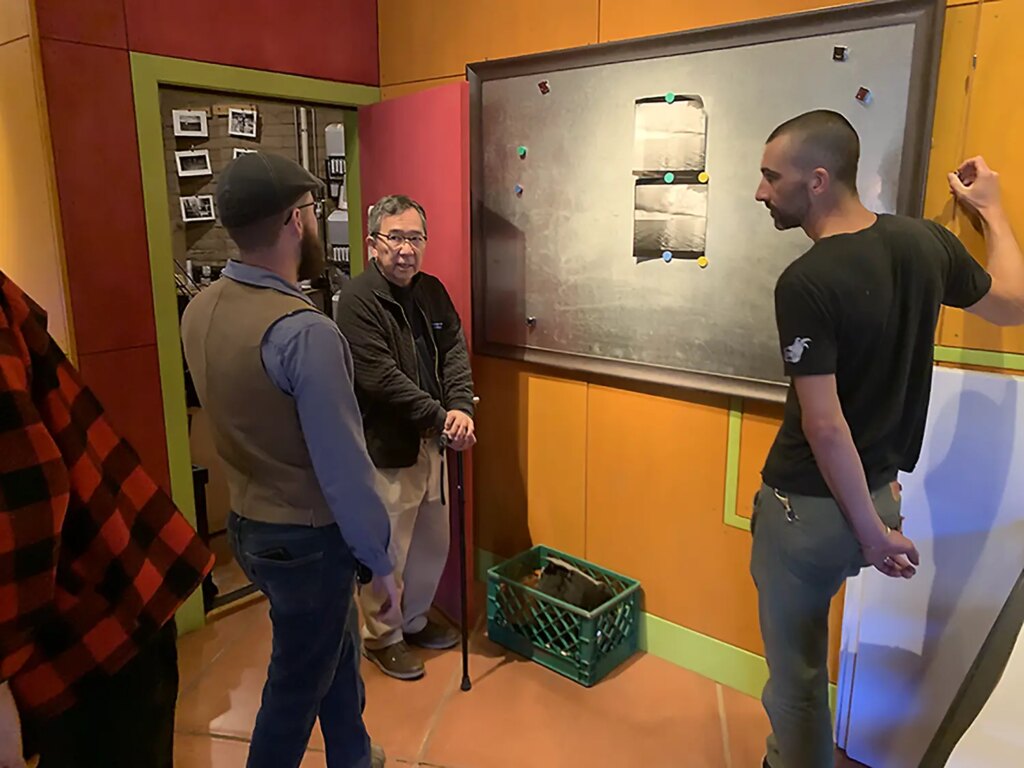
And unlike any other commercial photo lab that I’ve ever heard of, this lab was founded on the premise that a photographer should be standing next to the printer who is turning a shooter’s vision into reality. That’s probably the case if you are a name photographer, I thought. How about the rest of us who plant our tripods in the back 40 far removed from big name galleries and the limelight?
So, I fired off an email to Hidden Light, asking for prices and confirming that an unknown photographer from Hawaii could book time in their darkroom. I got the price list and an invitation to join them in Flagstaff. The email was sent by the lab’s most recent owner, Matt Beaty.
Hidden Light has the enlargers to work with traditional negatives up to 8×10. But most of the darkroom work is hybrid – that is, they make a print-sized negative from a digital original file or a scan of a negative or transparency. That monochrome negative is then printed with inks from the specialty supplier Piezography. While I’ve heard of using Piezography black and white print inks for prints, and Hidden Light offers that service, too, I’d never heard of them being used to make the digital negatives that Hidden Light uses for its contact prints. If that’s the secret sauce in the Hidden Light recipes, it works.
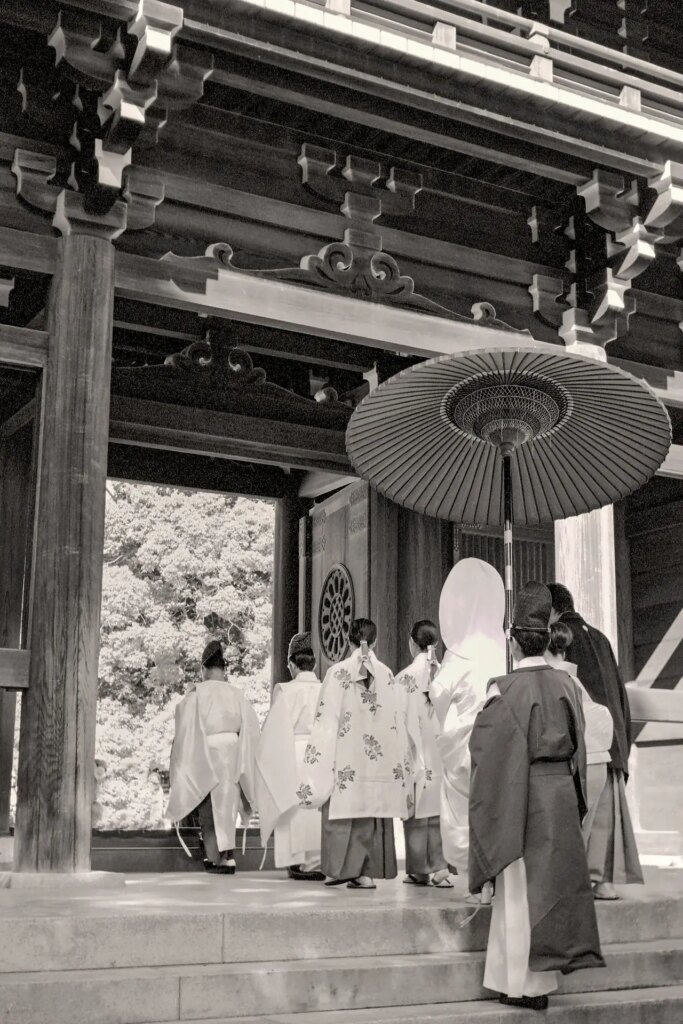
I chose seven photos to print at Hidden Light, five with silver gelatin process and two with platinum palladium. I figured if I was going to travel to Flagstaff, Arizona from Honolulu, Hawaii, I might as well take full advantage of the opportunity.
First, I should make it clear that the crew Hidden Light didn’t know me from Adam. But the respect and professional courtesies that were extended to no-name me was humbling. I was the only photographer on the reservation board for the day that I was there. And Matt even turned down a walk-in “I need it now” printing job because I was there.
Second, they aren’t kidding when they say they want a photographer to work directly with thier darkroom techs. I was looking over Matt’s shoulder for a few minutes as he worked on one of my files. A few minutes later, I was with Taylor Mahoney in the silver gelatin darkroom as he made an 8×10 test strip using one of my images. Once the paper was run through the developer and fixer, Taylor used a squeegee and hair dryer to get the print fairly dry. And then he took it to “The Board,” a section of wall lit by gallery lighting. It’s a (literally) brilliant idea to review prints.
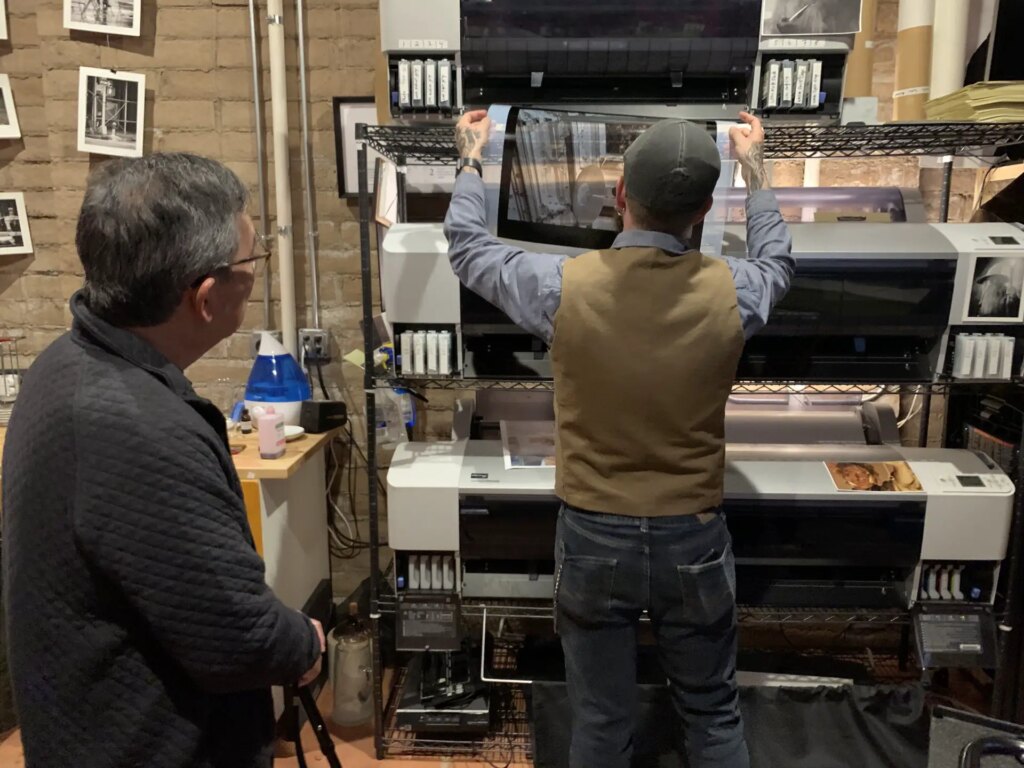
More tweaks were made to the print’s digital file – focusing on one area that was particularly murky – and a new digital negative was printed. Based on the test strip, and with dodging and burning effectively made by a computer producing the negative, it was decided that a 35 second exposure was what was needed. The resulting 16 x 20 print, gorgeous in every way when examined on “The Board,” was spot on.
While I hadn’t made a wet darkroom print since October 1971 as a college freshman, I knew what Taylor was up to in his red light colored world. That was not the case when it came time to print the two platinum palladium prints that I ordered. Matt is the platinum palladium guru at Hidden Light. He gladly shares his knowledge and advice with the novice, such as me. And boy, are the platinum palladium prints stunning.
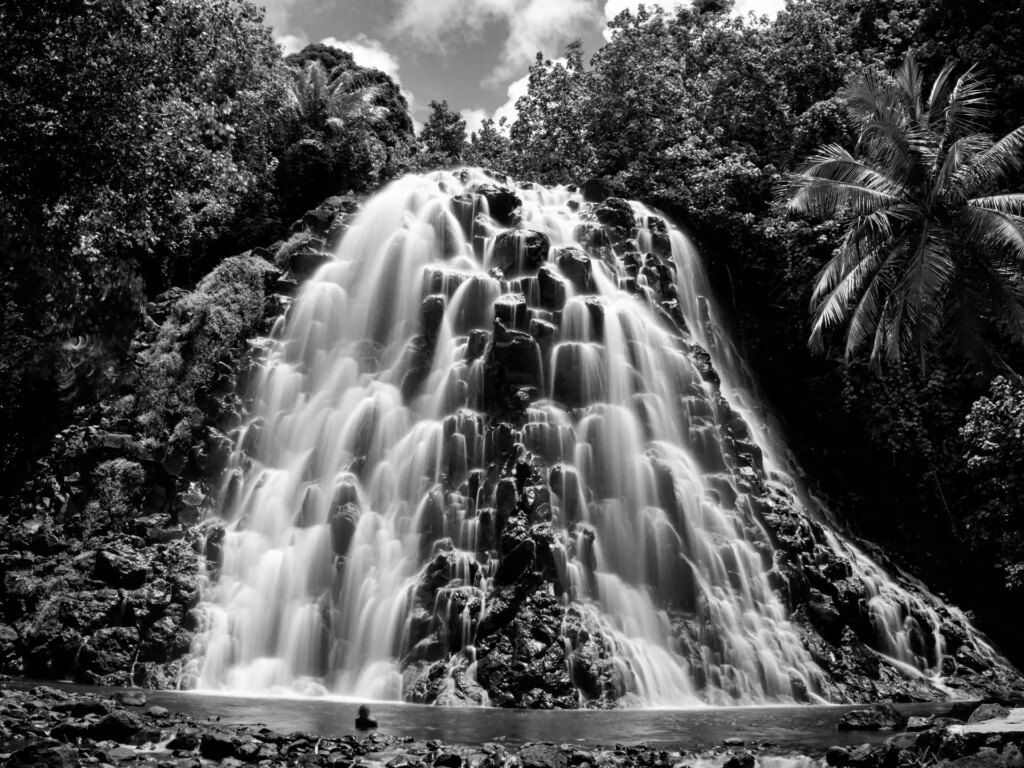
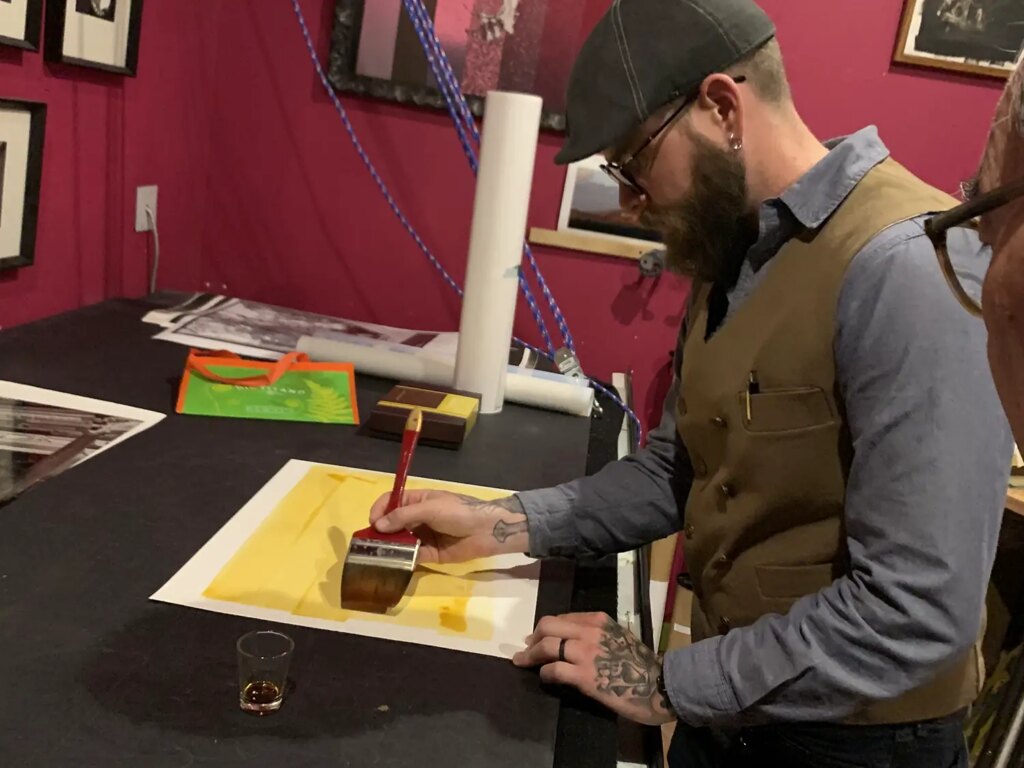
The method is well suited for a print with good mid-tones. If you have them in your photo, you’re In for a real treat. The platinum palladium process transformed two very good images into outstanding prints.
This comes at a cost. A 16 x 20 silver gelatin print on fine arts fiber paper is $240 for the first copy, and $180 for each subsequent same sized print from the same negative. A 16 x 20 platinum palladium, on the other hand, is $900, and there’s no discount for more than one.
Is it worth it? I would have had my doubts before seeing one of my photos printed as a platinum palladium. But both images looked so much better with midtones extended for what seemed like forever. They really look like different prints.
The two biggest names that print at Hidden Light are Tyler Shields and David Brookover. I am neither Tyler Shields nor David Brookover. So it was a reasonable question that I asked myself: will I be able to sell these Hidden Light platinum palladium prints for a reasonable markup? The answer is grounded in reality: perhaps in the right show or gallery, but it will be a challenge.
While the platinum palladium pricing is a stretch for my work, the silver gelatin is not. Choosing to print the right image as a silver gelatin print is a no brainer. I know there are collectors who would value owing a traditional silver print.
If you aren’t heading to Flagstaff, Arizona anytime soon, there’s another way to take advantage of Hidden Light’s services. It offers a $400 “all the 8×10 proofs you require” deal. I think it’s a terrific idea, particularly if you are printing several images. Think of it this way, it’s almost like being in the darkroom with Matt or Taylor, and it’s a lot cheaper than traveling to Flagstaff.
Hidden Light LLC also has an adjacent gallery to showcase its artists and their prints. And it has its own framing department.
I’ve just touched the surface of the Hidden Light experience. The lab had one of its staff film my visit, and turned it into a segment on its YouTube channel. You can see it here: https://www.youtube.com/watch?v=p8y5gI0X9vM&t=13s.
I’m in a three-photographer exhibit in a few months. The theme of the show is ‘Monochrome Portraits,” and I will be sending Matt a file to do a test print. I’ll compare it to my printer, who is a master printer and a genius with inkjet printers.
Is Hidden Light the “best lab” in the country. I can’t answer that question, but I do know that Matt, Taylor and the gang run a first-class, full-service lab. And they are good, very good.
Share this post:
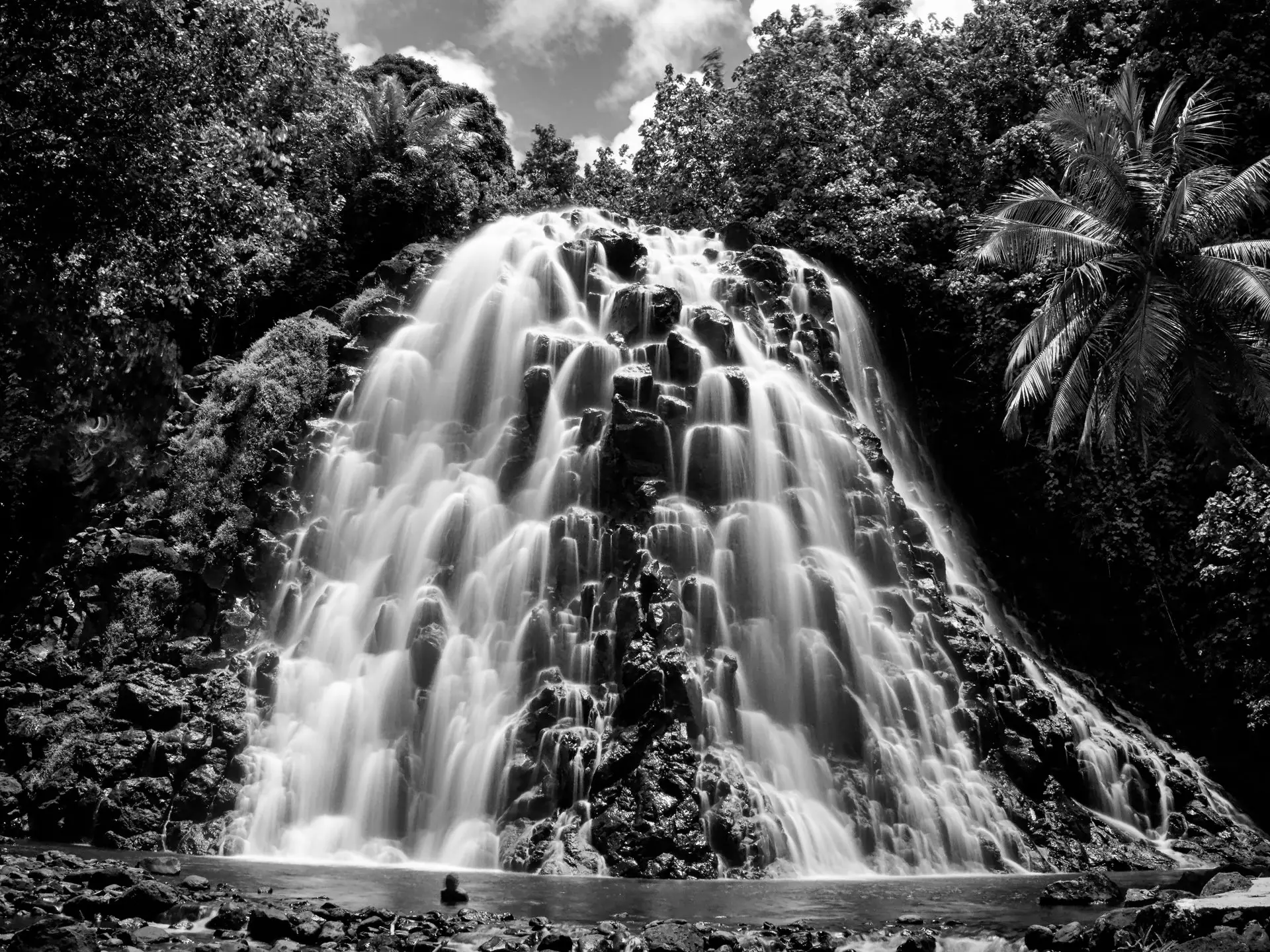


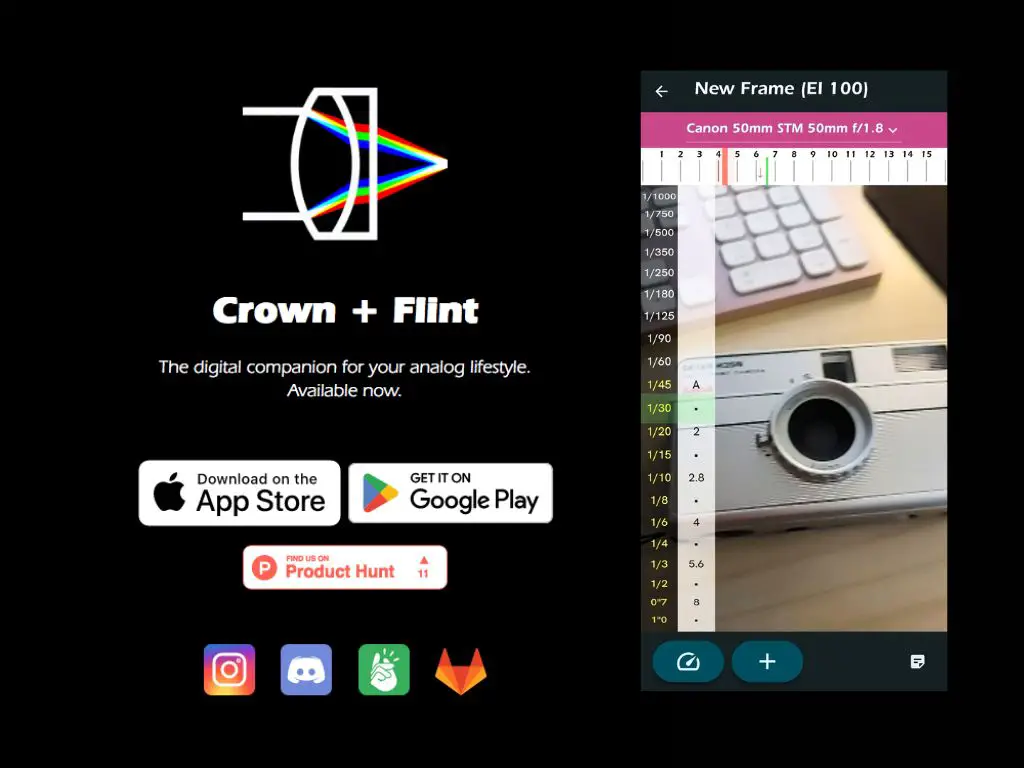
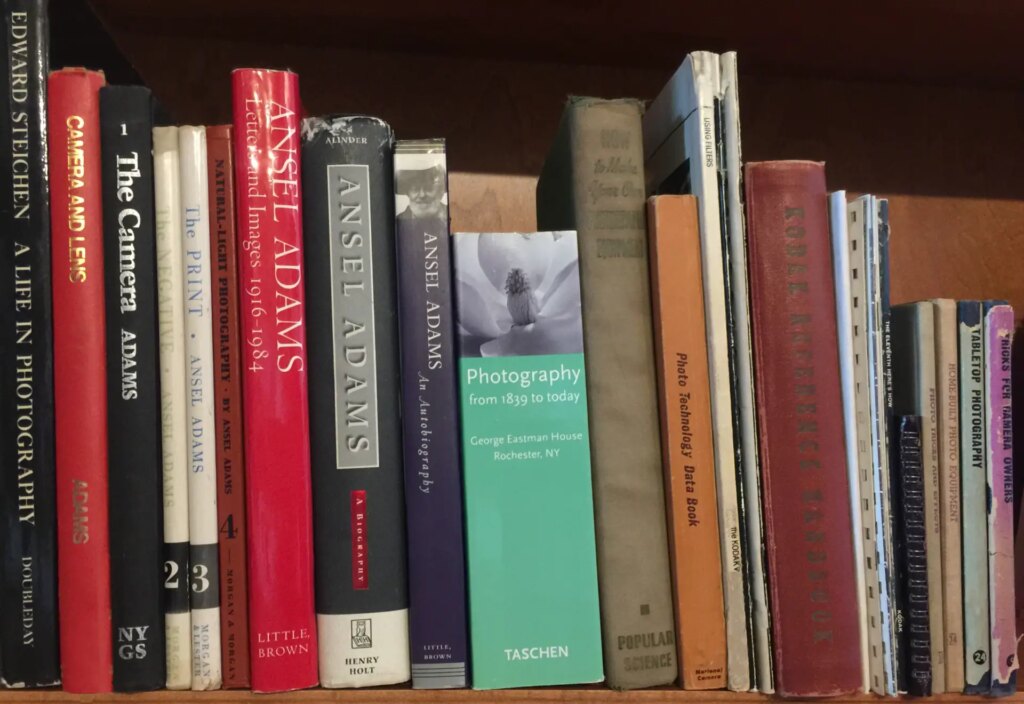




Comments
No comments found